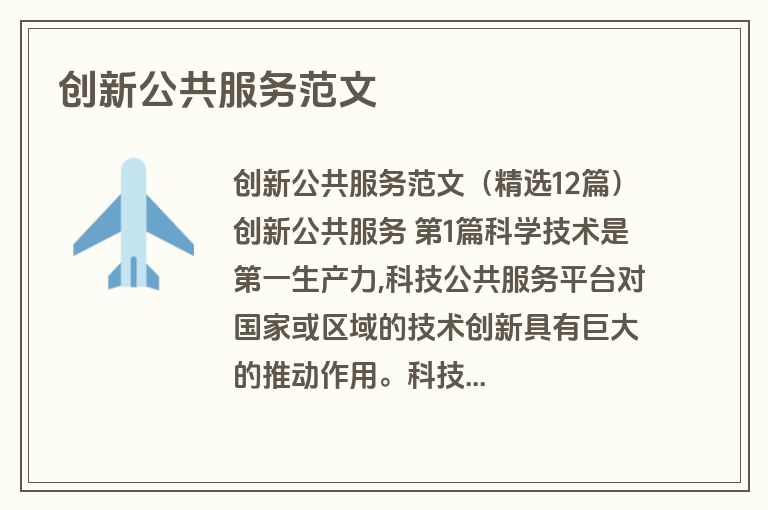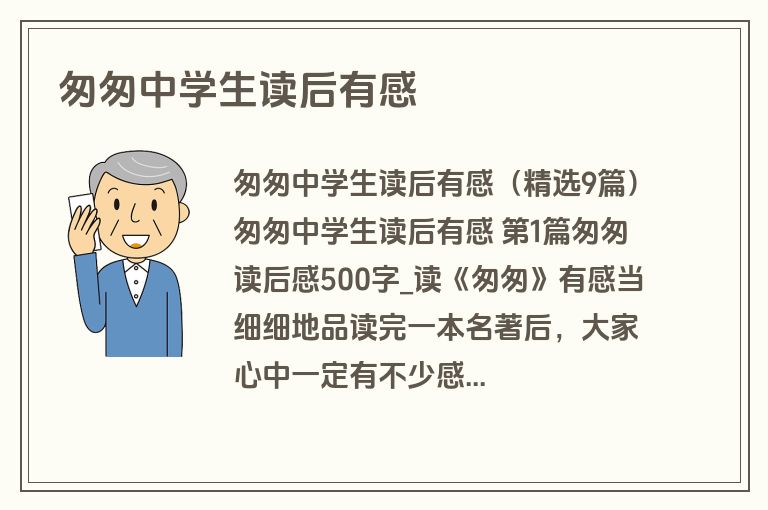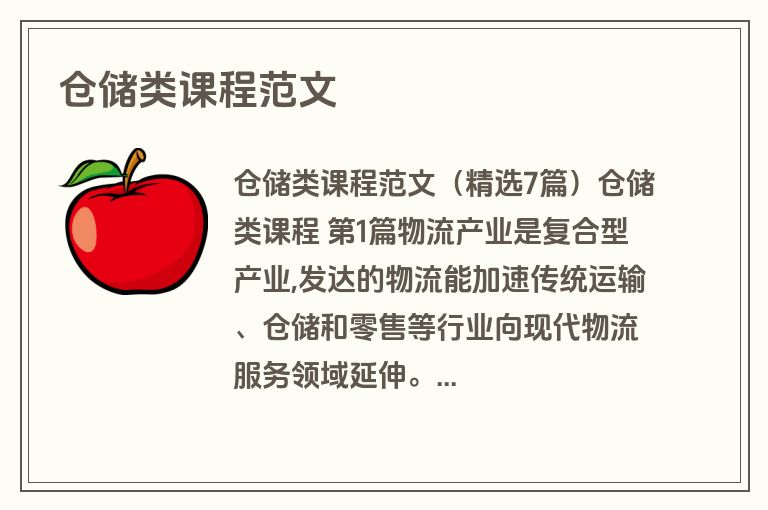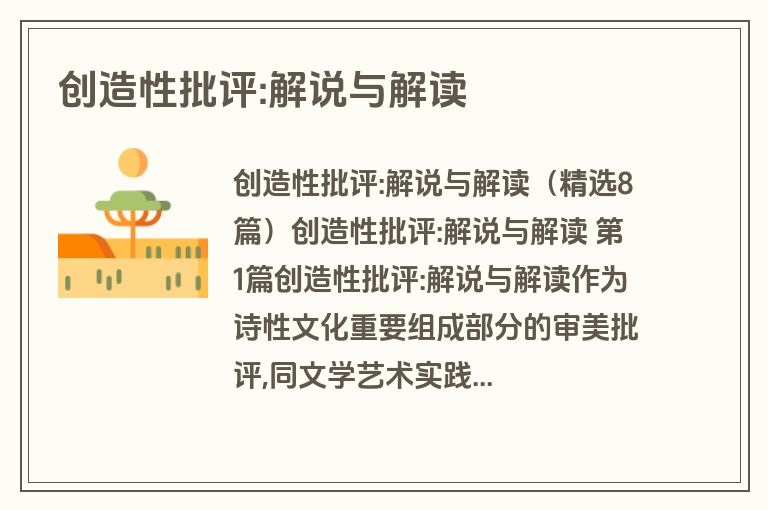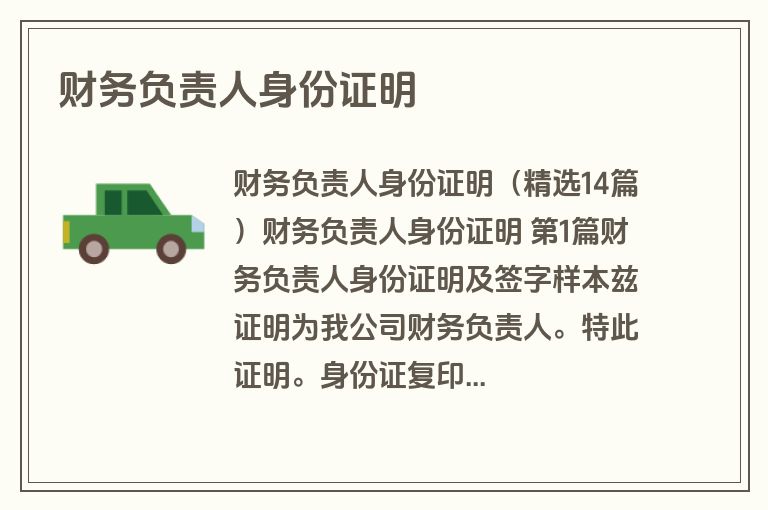牛津上海版英语高二上(精选6篇)
牛津上海版英语高二上 第1篇
S2A
Chapter 1
Reading My favorite sport
Skiing is my favorite sport, even though I have only skied for four days in my whole life.Last year, my father promised to take me on a holiday if I did well in my exams.When I got straight A’s, Dad said’ ‘How about a weekend at the Botanical Gardens? ’
However, my mu said, ‘No, you promised a special holiday.I think you ought to keep your word.’ And, despite the expense, he did,M y dream was to see some real snow, so in the Christmas vacation we flew to Seoul, South Korea, and then took a shuttle bus which runs back and forth between Seoul and Muju Resort.As the bus climbed through the mountains, we saw the snow in the trees.I was dying to get out of the bus.No one in my family had ever touched snow before.We were all like little children---we picked it up, made snowballs, and threw them at each other!Then we checked in at the hotel.Our room overlooked one of the ski slopes.The slope was floodlit, so we watched people skiing until 10 p.m.We could not wait to try it ourselves.The next day we had our first skiing lesson.We rented our ski suits, boots ad skis, and went outside onto the snow.Wearing skis for the first time makes you feel very strange.Suddenly you find you cannot even walk.Our instructor took us onto a gentle slope, and showed us some basic skills.In order to do up a hill, you have to stand sideways, and go up step by step.You must point the tips of your skis together so that you can stop.However, the tips must not cross, or you will fall.You should not ski alone in case you fall and get injured.To be honest, that first lesson was not a great success, and I kept falling down!
However, the next day I definitely improved.I only fell over a few times, and I managed to do a few longer runs.I felt pleased with myself, and the instructor congratulated me, so I felt great.Although it was very cold, I spent most of that holiday skiing.It was the most wonderful time of my life.Nevertheless, it was all over too soon.Now I have decided to work part-time this summer, so I can earn enough money for another super skiing holiday.More reading Faster, Higher, Stronger
The Olympic Games have a long history.The first modern Games were held in Athens, Greece in 1896.Every four years, athletics from all over the world compete in various sports at the Games.The largest group participates in athletics.‘Athletics’ refers to sports in four areas: track, field, road and combined events.Track events, such as running and hurdling, test a person’s speed.In order to win a track event, a person needs to go faster than everyone else.Field events, however, test how high or far someone can jump in events such as the long jump or high jump.They also test how far someone can throw in events such as the shot-put, discus or javelin.The marathon and race walks are road events.They test endurance.In combined events, athletes are required to compete in a series of competition from each category.The most famous combined event is the decathlon.The decathlon involves ten different athletics events that take place over two days.Since the decathlon involves ten different athletics events that take place over two days.Since the decathlon tests all-around physical ability, the winner of the decathlon is often called ‘the world‘s greatest athlete.’ Although all Olympic sports are equal in importance, athletics is, in many ways, the best picture of the Olympic motto ‘Faster, Higher, Stronger”.The desire of humanity to do better---to run faster, to soar higher and to push farther---is what the Olympics are all about.Chapter 2
Reading Tutorial centres
Helpful
I have been studying at a tutorial centre for two years.The fees are very reasonable, and my command of English has improved greatly since I started.My tutors are all qualified teachers.They are sincere and kind.I have been helped a lot by them.One of my teachers was British.At first, I could not say anything to her.However, later I learnt how to communicate in English with a westerner.I think that the tutorial centre has given me a lot of confidence in using English.I go to sleep
I have been attending a tutorial centre for two months.I have been forced to attend by my parents, but I do not think it is useful for me.I am always very tired after school.Sometimes I even sleep during the classes in the evening.Furthermore, the teachers are very boring.They give us a lot of supplementary exercises but they teach us nothing.I usually read comics during class.Sometimes I go to a video arcade instead.I think tutorial centres are useless Waste of money
I have studied at a tutorial centre for one year.However, I think that I have been cheated.These tutorial centres are only interested in making money, so they accept too many students for each class.However, they do not want to pay for good teachers.My English teacher was a university student who studied physics, not English!
Very often, he could not answer our questions about the use of the language.In my opinion, it is better to spend more time on school work than to waste money at a ‘money-making’ tutorial centre.Good and bad
I have experienced both good and bad tutorial centres.In my first centre, I was in a very big class.My teacher was an Australian.He just talked about his travels.I could learn nothing from him.I left within a month.Then I ask all my friends for their advice.As a result of their recommendations, I enrolled on a course at another centre.The teachers are excellent here and the classes are small.We have been taught many good techniques for developing our language and studying skills.There are both good and bad tutorial centres, so you must do some detective work before you enroll.However, the most important thing is whether you are willing to learn and to work hard.The key factor is yourself.More reading Independent learning Independent learning is one solution for those who want to continue their education, nut have no time for it.It is often described as ‘a class of one’, because you work alone.You study at your own pace, at a time and place convenient for you.These courses can help you get a degree, help your career, or help you learn what interests you.One type of independent learning is the correspondence course, In a correspondence course, a school sends you textbooks, study guides, and materials such as video and audio discs.You communicate with your teacher by mail.Your teacher reads your papers and makes comments, Your marks are recorded by the school before they are mailed back to you.A newer style of independent learning is e-learning.With e-learning, you study using computer software or the Internet.You can learn on your own, or you can enroll on a course.Usually, in an e-learning course, students communicate with their teachers through e-mail.However, some students have been using video recently.This allows the teacher and the students to see and communicate with each other at the same time.Independent learning gives you the freedom to adapt your learning to your lifestyle.However, it requires self-discipline and hard work, so not everyone is successful at it.Those who are successful receive a real sense of achievement and satisfaction.Chapter 3
Reading Fashion
My topic is ‘Fashion’.Fashion is important to almost all of us.By fashion, we usually mean popular trends in styles of dress.When we do out or to a party, we usually like to wear fashionable clothes.To illustrate my talk, I have brought along five objects.My first object is this blouse.It looks beautiful, doesn’t it? It’s my most expensive piece of clothing, and I love it.It cost me $200.It may seem very extravagant, but I could afford it with my own savings.It wasn’t easy for me to earn the money, but when buying clothes, I think the more you spend the better the quality.So you see, fashion is quite important to me.However, I’m not as keen on fashion as my brother Gary.Last summer, he won a free trip to London in a contest.The organizers wanted to show him some famous sights.But he didn’t appreciate old buildings.He just spent all his time searching for the coolest pair of trainers!For him, fashion was more important than culture.These are the trainers he bought.Was it worth a trip to London to buy these? Well, I don’t think so.It was a waste of time and money.Fashion is very big business.Changes in fashion can create or ruin jobs.As an example, I have brought this blonde wig to show you.It belongs to one of my mum’s friends.In the 1960s, these were very fashionable.But a few years later fashions changed, and women wore wigs much less often.Many wig factories closed down, and hundreds of workers lost their jobs, which was terrible!
Fashion can affect the natural world, as well.I’m holding an old hat borrowed from a drama company.It’s made of beaver fur.These hats were very fashionable about 200 years ago.As a result, beavers almost became extinct.Luckily, in the 1850s, these hats went out of style and the beavers were saved.Finally, we should remember the saying,’ never judge a book by its cover.’ Clothes will not make us more or less clever, better or worse, more or less honest.I once saw a movie about Mother Teresa.She spent all her life helping poor people in India, most of whom were dying.In 1979, she was awarded the Nobel Prize for Peace.When she flew to get the award, she wore the same old clothes as usual, and carried all her possessions in a little bag like this, which I bought in a market.This reminds us that fashion is not the most important thing in life.Thank you.More reading Uniform fashion good for young students
School uniforms are not part of the traditional way of life in the USA.In 1987, Cherry Hill Elementary, which is in the Maryland, went against tradition by becoming the first public school in the USA to make students wear uniforms.The school did this to reduce trouble caused by the students’ love of fashion.Since this new programme has proved to be a good way to promote safety and discipline, other schools soon followed.By 2000, 12 pert cent of American public schools required school uniforms.The introduction of school uniforms has helped reduce school violence.Much of school violence is linked to the wearing of gang colours, which are the clothes worn by different youth gangs.In schools with youth gangs, the number of fights decreased by 40 per cent after uniforms wre introduced.Uniforms also send a message that students are at school to study, not to play.They reduce peer pressure and create school pride.These things help raise the academic level of the students.Although school uniforms are popular in some areas, this new tren has met strong resistance from many parents, some of whom angrily complain that uniforms keep students from showing their individuality.A few parents have even gone too curt to stop school uniforms from being introduced.For this reason, it is unlikely that uniforms will ever be adopted nationwade.Chapter 4
Reading The hamburger business
In 1954, an American businessman called Ray Kroc was selling milkshake machines.One small drive-in hamburger stand in California bought not one but eight of these expensive machines.Surprised by this Kroc decided to go and visit it.Arriving before the hamburger stand opened, Kroc sat in his car and watched.A team of young people in uniforms appeared and started cleaning the stand and its car park, making everything neat and tidy.When opened for business, the hamburger stand was immediately filled with customers.The staff were cheerful, fast and polite.The food was excellent.Impressed by the cleanliness, service and food, Kroc looked up at the name over the hamburger stand.It read, ‘McDonald’s Hamburgers’.Although started six years earlier, in 1948, McDonald’s was still a small business owned by two brothers, Mac and Dick McDonald.Kroc suggested that they should set up more outlets, but the brothers were happy with their life and did not want to expand further.However, they did allow Kroc to launch other branches of McDonald’s for them.That was the start of the biggest fat-food company in history.In 1955, Kroc opened his first McDonald’s near Chicago, and many more swiftly followed.In 1959, the 100th McDonald’s was opened.In 1961, Kroc took over complete ownership of the business from the brothers by paying them US $2.7 million.By 1972, a new McDonald’s was being opened every day, and by 1974 there were over 3,000 restaurants.McDonald’s came to Hong Kong in 1975, and was introduced into Shenzhen in1990.Two years later, the first McDonald’s in Beijing opened with more than 40,000 customers on its first day.Why has McDonald’s been so successful? Back in 1956, McDonald’s adopted the motto ‘Q.S.C.&V.’ These letters stand for’ Quality, Service, Cleanliness and Value’.In all of these areas, McDonald’s pay great attention to detail.For example, after years of planning, McDonald’s established its largest ever restaurant in Moscow in1990.To achieve the right quality, potatoes are imported into Russia, and farmers are taught how to farm them properly, as well as how to harvest and pack them.To achieve good service, McDonald’s has one of the best training programmes in the world.It even has seven Hamburger Universities(one in Hong Kong)where top personnel can learn management and customer service skills.By 2005, McDonald’s had over 30,000 outlets in 119 countries and regions.It sells more than 100 hamburgers every second of the day.While it does not yet have a restaurant on the Moon, no doubt a plan is already being made for one.More reading The rise of chain stores in China
During the last few years, the number of chain stores has greatly increased in big cities in China.Nowadays, within a short walk along a busy street, you are likely to find a chain store of some kind---a fast food restaurant, a bakery or a convenience store.Chain stores have become part of people’s daily lives.They may pop into a BreadTalk to buy a sweet roll for breakfast on their way to work.They may visit a Lianhua Supermarket in the evening to buy some food for dinner,For a birthday, they might celebrate with friends at a Little Sheep Hotpot Restaurant.At the weekend they may go to GoMe Appliances to buy a DVD or MP3 player.Chain stores have become so popular that some people include them as a factor when deciding where to live.Why have chain stores grown so fast in number and influence? Meeting the customers’ needs is the answer.Opened in convenient locations, the stores are usually next door to people’s homes and close to bus stops or underground stations.They offer a wide range of products in a clean, well-lit and relaxing environment.Every store in a chain operates in the same way as the others do.That way, everyone knows what to expect in case they shop there.The prices are reasonable too.It seems that chain stores are a welcome development in China.They are certainly a new force changing people’s way of life.Chapter 5
Reading Virtual reality
Only 50 years ago, computers were bigger than people.Today, people can carry their laptops with them anywhere they go.Soon, we may be able to step inside a computer world thanks to the magic of virtual reality.What is virtual reality, or VR? If something is virtual, then it is created by computer technology and appears as if it were real.Virtual reality is a computer system with a special headset.When you put on the headset, you look at two tiny television screens.They are so close to your eyes that your mind will see the image as one picture, and you will believe that you have entered a different world.In many systems, you also wear a special data glove.With this glove you can reach out and touch things in the artificial world.The first VR games, already sold round the world, enable you to drive a sports car, fly a plane, or fight an enemy.In the future, it may be difficult to distinguish the virtual world of the games from the real world outside.However, VR is not just for entertainment.One day, delighted children will be able to learn geography by observing exciting foreign countries without having to leave their classroom.They will be thrilled to learn history by visiting the pyramids of Egypt, or by hand-feeding friendly dinosaurs.In addition, business will be able to use VR for many tasks.Cars designed using computers can be tested as virtual machines first, before they are manufactures in metal.Architects will be able to make virtual buildings, which they can walk around and inspect before constructing.VR can help us in hundreds of ways.Despite this, concerned critics have warned that there could be dangers in this powerful new medium.Will we have VR games in which people can commit virtual crimes? After people get used to VR, will they want to return to reality? Will we forget how to live and work with real people? On the other hand, some people think that VR will help us improve the world.By experimenting harmlessly inside a VR world, we will be able to see the dangers we may face in the future.Then we will be able to avoid them in real life.No doubt there will be some problems with VR, as there are with all new inventions.However, one thing is for sure: VR is here to stay.Get ready to step into another world!
More reading Wearable technology
Did you know that some technology can be worn?
In fact, wearable technology has been around for some time.The first people to experiment with the idea were managers of sports teams.They wanted to know how athletes could use technology to improve their performance.Special vests, created to monitor an athlete’s body, can measure how fast the heart is beating and how hard the athlete is breathing.Scientists have also developed ‘cooling’ vests to help athletes perform better in difficult conditions, such as hot weather.Furthermore, an American company is currently researching clothes for soldiers to help them run faster, jump higher and lift heavier equipment.Before long, we will have technology in our everyday clothing.A computer hidden in a coat could be operated by a keyboard on one of the sleeves.Electronic sunglasses could show us maps of where we are standing and point us in the direction that we want to go.Our clothes could also monitor our bodies.They could tell us when we need to eat certain foods, take medicine or rest in order to stay healthy.There is only one problem with clothes like these: They may be difficult to wash.Electricity and water do not mix!You could remove the electronic parts before washing, but putting them back in again could take hours.Designers are now building small wires into the fabric of the clothing to solve this problem.These clothes could appear in shops any day now.Soon, we could all be wearing electronic clothes.Chapter 6
Reading Transforming Mars
Ever since the beginning of history, people have dreamt of interplanetary travel.For centuries, these dreams have always remained dreams.However, scientists now want to make these dreams come true.They are planning to transform Mars so that humans can live there.Within 30 years, the first people will land on Mars and, by the year 2185, we will have established cities.In many ways, Mars is the planet most similar to Earth.A Martian day lasts about 24 1/2 hours(although a year has 687 days).While there is no water, there is a lot of ice in the two polar ice caps.The average temperature is-60℃.The plan involves changing Mars so that it becomes more like Earth.This means using the ‘greenhouse effect’(which we are trying to stop on Earth).The suggested programme would have five main stages.Stage 1(AD 2030-2045).The first expedition arrives on Mars, after a journey by spacecraft of about six months.The members construct underground buildings, conduct experiments, look for good sites for future landings, and also check for signs of life.They can survive only as long as they wear spacesuits, because 95 per cent of the atmosphere is carbon dioxide.Nonetheless, the low gravity(one-third of Earth’s)means they can move around easily.Stage 2(AD 2045-2095)
More expeditions arrive.Huge mirrors are put in orbit round Mars to heat the polar ice caps.The ice caps are sprayed black, so that they do not reflect the heat away.Chemicals are released into the air.As a result, the atmosphere becomes thicker and retains more of the Sun’s heat.If the greenhouse effect can be started, the ice caps will melt, releasing water vapour, and the temperature will rise to-40℃.Stage 3(AD 2095-2130)Next, plants are introduced from Earth.If these plants can survive on Mars, carbon dioxide can be converted into oxygen.The first clouds appear, and the sky slowly turns from pink to blue.The temperature goes to-15℃.Stage 4(AD 2130-2145)
The warming continues, melting more ice.Rivers and small oceans are made.More people migrate from Earth and construct towns.Forests of trees are planted.Mars is looking greener.The temperature is 0℃.Stage 5(AD 2145-2185)
Mars is getting more like Earth.The amount of oxygen in the air rises, and the air becomes breathable.The inhabitants can go outside without spacesuits.The temperature reaches 10℃.(Since Mars is 228 million kilometers from the Sun, it can never be as warm as Earth)Cities, farms and industries are built all over Mars.The transformation is complete.More reading Chinese manned space flights
Chinese people have always dreamt of flying to space.Around AD 1500, a man named Wan Hu made the first attempt at space flight.He sat down in his chair, tried 47 rockets to it, and then lit them.There was a big boom.When the smoke cleared, Wan Hu was gone.The people watching might have thought that he was successful.However, we know now that his rockets were not powerful enough to send him into space.He most likely was consumed in the explosion.Jumping ahead nearly 500 years, in 1992 China began its manned space programme, leading to the space flight of Yang Liwei, China’s first astronaut, in Shenzhou 5 on 15 October 2003.China became the third country, after the USA and Russia, to send a man into space.Yang Liwei spent only about 21hours in space.This time was beaten by China’s next manned space flight, Shenzhou 6, which began on 12 October 2005.On this flight, Chinese astronauts Fei Junlong and Nie Haisheng spent five days orbiting Earth.In the future, China plans to have its own manned space station orbiting Earth.China is also developing a programme, named Chang’e after the story of a beautiful young girl who floated to the Moon, of missions leading to a lunar station.Chinese scientists are already researching on the idea of sending women into space.If China sends a woman to the Moon, the story of Chang’e will no longer be so difficult to believe
牛津上海版英语高二上 第2篇
频度副词
always/sometimes/usually/never 是频度副词,提问应该要用How often„? 在句中的位置是:放在行为动词的前面,放在be动词的后面。也可以说“行前系后”。E.g She is always kind.她总是很善良的。
She always helps other people.她总是帮助其他人。不能出现这样的句子:She is always helps other people.(×)一句话中不能同时出现两个动词。并且要注意主谓保持一致,尤其注意第三人称单数不可以忽略。
how often 与 how many times how often 提问“频率次数+时间范围” how many times 提问“频率次数”
e.g.—How often do you exercise? —Twice a week.—How many times have you been there? —Twice.副词
表示动作特征或性状特征。一般用来形容或修饰除了名词和代词以外的词,主要修饰形容词、动词、其他副词和句子。He looks very happy.(修饰形容词)
The old lady is walking slowly now.(修饰动词)Luckily, he got the first prize.(修饰句子)形容词后面+ly构成副词:
slow—slowly slight—slightly quick—quickly
careful—carefully fierce—fiercely immediate—immediately
gentle—gently
lucky—luckily
happy—happily
介词
What else do you do with your„?你和你的„还干什么? With是个介词,后面接人称代词时,要用宾格的形式。
With me/him/her/it/us /them 在具体的某一楼层只能用介词on,并且第几层还要用序数词 On the ground floor, on the first floor, on the fifteenth floor
具体的某一天介词只能用on On Sunday, On Sunday morning,On the Open Day he one on the left/right 左边/右边的这个 the one in the middle 中间的这个
如果是介词短语修饰the one,应该要放在the one后面,如果是形容词应放the one的中间the left/right one the middle one at weekends= at the weekend在周末
现在完成时
现在完成时的构成是: have/has +动词的过去分词。have/has been to 去过,到过(表示现在已经回来)have/has been in 住在 = have lived / stayed in have/has gone to 去,到„..(表示现在还没有回来)e.g.We have already been to Changfeng Park.Have you been to „..yet? 你去过„..吗?
Yes, I have already/just been to„./been there.是的,我已经去过了。No, I haven‟t been to „/been there yet.不,还没有去过。
already 已经(多用于肯定句,放于动词前)yet 迄今,还(多用于疑问句和否定句,放于句末)just 刚刚(用法和位置和already相同)
e.g.I have already been to Lily’s home.Have you been to Lily’s home yet? I have lived in Shanghai for thirteen years.No, I haven’t been to her home yet.live / stay „for„在„住/待„(时间)for +一段时间,多与现在完成时连用表示动作从过去延续到现在的一段时间,并用how long提问。
代词
one 用来指代一个人或事物,而ones用来指代一些人或事物。
定冠词the 定冠词the的用法:
a.在球类运动前不加定冠词the play football / basketball / tennis, etc.b.在乐器前必须加定冠词the
play the piano / violin, etc.c.在watching television中,不加定冠词the
时间表达方式
on the tenth of September / on September tenth 9月10日 two fifteen = a quarter past two
2:15
Three ten = ten past three
3:10 One thirty = half past one
1:30 two forty = twenty to three
2:40
half an hour = 30 minutes 用了half an hour后面就不能再有minutes one and a half hours=one hour and a half
一个半小时 One hour and twenty minutes
一小时二十分钟 a.m./p.m.分别表示上午和下午。
First,„/Next,„/Then„/After that,„/Finally,„ Finally = at last = in the end
时间状语从句
„when„
当...的时候
引导时间状语从句,表示一个动作与另一个动作同一时间发生,或一个动作在另一个动作所延续的范围之内发生。主从句时态要一致。当主句用一般将来时,从句用一般现在时代替将来时。
What can you see when there is a typhoon? 当有台风时,你能看见什么?
When it doesn’t rain tomorrow, I will go out for a walk.当明天天气不下雨时,我将出去散步。
交通工具
By bus/bike/car/underground/train/ferryride take a bus/bike/car/underground/train/ferry He goes to school by bus.=He takes a bus to school.He goes to school by bike.=He rides his/a bike to school.=He cycles to school.其他的交通工具都能用take来表示乘,但bike只能用ride a bike on foot 步行
She goes to work on foot every day.=She walks to work every day.数词、量词
a few 只能修饰可数名词,与可数名词的复数形式连用 a little 只能修饰不可数名词 some / a lot of 既可修饰可数名词又可以修饰不可数名词。当与可数名词连用时,只能与可数名词的复数形式连用
Some用在肯定句中,any用于否定和疑问句中。
plenty of “许多,大量”,后面可跟不可数名词或可数名词复数 too much 太多+不可数名词 too many 太多+可数名词复数
e.g.Don’t drink too much cola.不要喝太多的可乐。Too many sweets are bad for your teeth.吃太多糖对你的牙齿不好。
too little 太少+不可数名词 too few 太少+可数名词复数
可以用not...enough(修饰可数或不可数名词)结构改写句子。e.g.You eat too little fruit.= You don’t eat enough fruit.less 更少+不可数名词(less是little的比较级)fewer 更少+可数名词(fewer是few的比较级)
more 更多+可数名词、不可数名词(more是many、much共同的比较级)
e.g.You should have less meat, fewer soft drinks and do more exercise.你应该少吃肉,少喝软饮料,多做运动。
once 一次 twice 两次
三次及以上: 数字+times a quarter of 四分之一
three quarters of 四分之三
量词:a slice of /slices of;a tin of/ tins of;a bag of/ bags of;a piece of/ pieces of
问句
How many uncles do you have?你有多少个叔叔? How many后面接可数名词的复数形式。
Why do you like„?你为什么喜欢„„? I like„because„我喜欢„„是因为„„
Which place shall we visit?我们将参加哪个地方? When are we going to come back?我们将什么时候回来? What kind of soup/fruit would you like?你想要哪种汤/水果? What does this sign mean?这个标志意味着什么?
What does this sign mean?=what is the meaning of this sign?
Where can we find it?我们在哪里能找到它? Which door must we use?我们必须要使用哪一扇门?
Would you like rice or noodles for dinner tonight? 你晚饭是想吃饭还是吃面条?or在这里是标示一种选择关系。A:May I have some„,please? B: Ok.Here you are./Sorry.I haven‟t got any.May I„?用于提出请求。回答时,表示允许,常用Ok。/Sure./All right./Yes, you may.表示拒绝时,常用No, you may not./ I‟m afraid you can‟t.并且may not不能用缩写的形式。
A:Would you like some„? B: Yes, please./No, thanks.接受别人的请求时,应说Yes, please.;拒绝别人时,应说No, thanks.I don‟t want any „ because it‟s/they‟re(too)sweet/salty/spicy/sour/bitter
How often„„? “多久一次”,用于对时间频率提问。
情态动词
must 意为“必须”表示很重要或必要。must not意为“不准”,表示不允许或禁止 must是个情态动词,后面接动词原形。We mustn‟t eat or drink.or用于否定句中表示“并列” and用于肯定句中表示“并列”。
Don‟t talk loudly.=We mustn‟t talk loudly.情态动词的一般疑问句就是把情态动词提前,后面照抄。句号改为问号。Must we wait for the green man? must作为情态动词表示“必须”,否定式mustn’t表示“禁止,不允许”,注意由must提问的一般疑问句肯定回答用Yes, „„must;否定回答用No, you needn’t.花钱花时间
cost以物作主语,通常是问价钱
Take以it作主语,通常是花费时间 It takes me 10 minutes to go to school.Spend 以人作主语,既可以是花费金钱,也可以是花费时间。Spend time/money on sth.spend time/money in doing sth.E.g I spend two yuan on this pen.=I spend two yuan in buying this pen.It takes sb.some time to do sth.花费某人多少时间做某事。
It takes me about fifteen minutes to go to school.我去学校要花费15分钟。
How much does it cost?它花费多少钱?
How much was it?=How much did it cost?= What was the price of it? 它多少钱。How long does it take you to get to„ 它花费你多长时间到达„
地点、方位表述
near 离„很近后面直接接地点
I live near school.=My home is near school.我家离学校很近。far away from=far from离„很远
He lives far away from school.=His home is far from school.他家离学校很远
get to “ 到达„ ” 表示“到达那里”只能说get there
He will arrive in Shanghai at two o‟clock.reach是个及物动词,后面直接接地点名词 I reach school / get to school
leave for 出发去„„动身去„„ leave A
离开A地
leave for B
出发去B地
e.g.He will leave Shanghai.e.g.He will leave for Tokyo.leave A for B 离开A地去B地 e.g.He will leave Shanghai for Tokyo.arrive + in 大地方(如国家、城市等范围较大的地方)
e.g.arrive
in
China
/ Shanghai„
arrive + at 小地方(如车站、学校等小范围的地方)school...方位词:east / west / north / south / north-east / north-west / south-east / south-west 用法:a.两地不相邻: e.g.A is north B.(= to the south of)
b.两地接壤: e.g.A is on the north of B.e.g.arrive at the airport /
c.所属关系,A包含B, B属于A: e.g.B is in the north of A.表示提议的句型
Shall we have a picnic tomorrow?=Let‟s have a picnic tomorrow.明天我们野餐怎么样?/我们明天去野餐吧!Shall we„?/ Let‟s用于提出建议。
Shall是个情态动词,后面接动词原形。Let‟s„后面也是接动词原形。
That‟s a good idea.那是个不错的主意。
-------Would you like some snacks?-------No, thanks.I don‟t want any.I want some fruit.How about = what about怎么样?
Why / Why not?为什么?/为什么不?
将来时
一般将来时:用于表示将来某个时间发生的动作或状态。常与tomorrow, next +时间词,in+一段时间, in the future等连用。
其动词形式有will/shall + do 或 is/am/are going to + do(动词原形)will / be going to will是个情态动词,没有人称的变化.E.g He will arrive in Shanghai at two o‟clock.I will meet them at the entrance.Your parents will arrive at two o‟clock.但是be going to有人称的变化.He is going to go fishing tomorrow.I am going to go fishing tomorrow.They are going to go fishing tomorrow.都是用来表将来的,他们后面应该接动词的原形。
if引导的条件状语从句,当主句用一般将来时,从句用一般现在时代替将来时,即“主将从现”。
If there is no rain, we will have no water to drink.如果没有雨,我们将没有水喝。
连词
连词主要连接两个简单句
并列连词有and并且,和;but但是;or或者,否则的话;so所以;for因为。She can‟t read or write.她既不会读也不会写。
or用在否定句中表平列关系。and用在肯定句中表平列关系。She can read and write.她既会读又会写。
also,too两个都可以表示“也”,also用在句中,但是too用在句尾,并且要用逗号隔开。
连词because引导原因状语从句。
比较级最高级
healthier than 比----健康
less healthy than 比----不健康 as healthy as 像----一样的健康 as unhealthy as像----一样的不健康
than用于比较级中 as...as用于原级比较
one of the most intelligent animals最聪明的动物之一 one of the most dangerous animals最危险的动物之一
one of the + 形容词最高级+ 名词的复数,表示“最„„的之一”。
关系表达
用于三者或以上:most /some / all /none of them 他们中的大多数/一些/全部/全都不是 All of the bus drivers were men.改否定句如下: None of the bus drivers was a man.或者None of the bus drivers were men.用于两者之间:Both of my parents are engineers.改否定句如下: Neither of my parents is an engineer.词组固定搭配
see sb.doing sth.看见某人正在做某事 use sth.to do用某物来做
use sth.for doing用某物来做
like to do sth.=like doing sth.喜欢做某事 be kind to sb.对某人很友好 tell a lie = tell lies说谎
share sth.with sb.和某人分享某物 for the first time第一次
want sb.to do sth.= would like to do sth.想要做某事 need to do sth.需要做某事。Invite sb to sp邀请某人去某地
have a great / good time 玩得开心,过的愉快 on the road在路上 wait for 等待 be late for school 迟到 find out查出,弄清
talk to sb.对某人说,跟某人交谈。talk about sb./sth.谈论关于某人/某事。tell sb.to do sth.告诉某人去做某事 tell sb.not to do sth.告诉某人不要做某事
in the same place / in different places 在同一个地方/在不同地方 How much...do we need ?我们需要多少......? plan to do 计划做„„
know about 知道/了解关于„„的事情 give sth.to sb.= give sb.sth.给某人某物 forget doing 忘记做过„„(已做)
forget to do忘记去做„„(未做)
member用法与foeget相同
practise doing„练习做„„,训练„„ help do the housework 帮忙做家务
help sb.(to)do sth.帮某人做某事
= help sb.with sth.帮某人某事 learn to do sth.学会做某事
learn—learnt—learnt have to do sth.表示“不得不做某事”
keep sb./sth.+ adj.保持某人或某物处于某种状态 instead of(doing)sth.代替,而不是 be made of由„„制成的(看得出原材料)be made from由„„制成的(看不出原材料)be made by由(谁)制造的 be made in由(某地)制造的stop doing sth.停止正在做的事
stop to do sth.停下去做某事
be important to sb.对某人是重要的
牛津上海版英语高二上 第3篇
笔者以《英语(牛津上海版)》8B Unit 7 Poems中Reading板块的第二首诗歌“My school”(诗歌详见教学月刊网站www.jxyk.com“资料下载”栏目中的“原文选登”)为例,探索在初中英语阅读课中,如何通过实施有效的跨文化教学策略来优化阅读教学过程,提高教学效益。
一、创设真实的文化情境
跨文化英语教学对个人综合素质培养所起的作用是通过教学内容情景化和个人化来实现的,只有置于具体的情景之中,文化内容才会焕发出活力,才能显现文化对社会和个人的调节和指导功能,才能使学习者身临其境地感受文化的作用。[2]240为此,教师要充分运用现代化的多媒体教学技术与手段,积极创设贴近学生实际生活的文化学习情境,营造浓郁的英语文化学习氛围。同时,教学设计要结合学生已有的学习经历,努力创造跨文化学习的机会,激发学生学习英语文化的兴趣。
阅读教学导入环节,笔者在屏幕上打出了我国著名诗人李白的《静夜思》。学生见后非常好奇:“这到底是要上英语课还是上语文课?”于是笔者与学生开展了以下这段对话。
T: Who wrote the poem?
Ss: Li Bai.
T: Can you talk about him?
S1: Li Bai is one of the most famous Chinese poets.
S2: He was born in Tang Dynasty and his nickname is诗仙.
T: Great! Is there any rhyme in it?
Ss: Yes. It’s -ang.
T: Why did Li Bai write this poem?
S3: Because he wanted to express the feeling ofmissing his hometown.
T: I agree with you. Today we’ll learn an English poem. English poems have the same characters as Chinese ones. They have rhymes and deep meanings,too.
通过这首人尽皆知的中国古诗,学生了解到英语诗歌同样具有丰富的韵律与深刻的思想内涵。整堂课从一开始就沉浸在浓厚的跨文化学习的氛围中,牢牢吸引住学生的注意力。
二、探寻词汇的文化渊源
世界各民族的语言都具有鲜明的文化特征,词汇能够最直接地体现该民族的文化价值取向。在语言的诸要素中,词汇与文化的关系最为紧密。胡文仲认为,词汇“是语言中最活跃、最有弹性的成分,也是文化载荷量最大的成分”。[3]73英语中很多词汇具有深厚的历史渊源。
“My school”第三节的第一句是:Mr. Black wassome times cross. 句中的cross学生以前学过,名词解释为“十字(架)”,动词是“穿越、横过”的意思。但在这里,这两个意思显然都不对。为了处理这个单词,笔者呈现了准备好的图片(见图1)。
学生几乎都知道耶稣是在十字架上殉难的,这是原有的背景知识。于是笔者发问:Do you know what happened after he died? 学生望着图片,个个睁大了眼睛。相传耶稣逝世后,人们把钉他的十字架做成小十字架,称为“圣遗物”。中世纪时,欧洲人宗教迷信极深,视拥有“圣物”为升上天堂的阶梯。骗子乘机把普通木头说成是基督教殉道者的十字架,削成木片,当作“圣遗物”出售图利。[4]当人们发现受骗时,当然很生气。于是,cross便有了“十分愤怒的、脾气不好的”意思。
直接告诉学生答案,可以省下不少时间,但现在这样的教学过程不仅让学生明白了cross解释为“生气”的来龙去脉,而且也使课堂充满了情趣。
三、搭准语音的文化韵律
语音是语言的物质外壳。音素的选择与组合反映了人们对客观世界的适应与感受,一个民族的语音特点与它的文化气质存在一种深层的同构关系。语音的重叠、辅音与元音的变换、韵律等都体现着文化意义。[3]英语诗歌具有丰富的韵律。在教学中,笔者首先介绍了头韵和尾韵的知识。接着,让学生填写表1,找出诗中的韵律。
然后,指出第一、二、四、五节用的是隔行押韵(ABCB型),而第三节 用的是隔 行交互押 韵(ABAB型),让学生了解英语韵律的丰富多彩。之后,进行全班诵读与个别朗读,平面的文字随着声音跃然纸上,完成视觉到听觉的转换。这样不仅完全发挥了语言的听说功能,而且让学生在体验的过程中充分感受英语的韵律之美,领略了别样的异国文化。
四、挖掘语法的文化特质
一个民族的思维方式、思维特征和思维风格通常具有深厚的民族文化渊源。与语言的其他部分相比,语法更隐蔽地存在于说话者的思维方式中。[3]68一个语言群体的思维方式和文化特点必然会影响这种语言的语法规则和系统。因此,语法也带有相应的文化成分。
本诗共五节,作者以第一人称叙述了发生在学校的故事。语言简洁明了,结构清晰,没有出现新的语法项目,似乎很容易理解。可细心观察后,我们就会发现,作者采用现在时和过去时相互交替的手法,尤其在第三、四节描述两位教师时全部使用了过去时。尽管在第二节,作者已明确表示:
I want to talk about the school,
I loved when I was small.
学生还是提出了疑问:Why does the author use so many past tenses in the poem?
笔者在备课时已考虑到了这个现象。根据隐喻认知模式,不论过去时间与现在时间之间,还是事实与虚拟之间,都是一种距离。英语动词过去时是一个表示过去时间的语法范畴,由于过去时间与现在时间或将来时间之间存在着距离,这种时间距离又映射到现实距离,并进一步映射到心理距离,因此经常用来表示虚拟和礼貌。[5]所以,过去时除了表示过去时间,在某些情况下也可表示现在时间或将来时间。这种在语法形式与语法意义间矛盾的语法现象,经上述隐喻和认知语法理论的阐释,显得合情合理。
于是,笔者解释道:
The author uses so many past tenses in order to express his or her politeness. It is a special form of English grammar. And it is also special in English culture.
五、赏析修辞的文化魅力
语言是表达思想的工具,修辞是语言表达的艺术。[6]修辞就是依据题旨情境,恰当地选择语言手段,选择表达方式,以有效地表达思想感情。因此,语言本体中不能没有修辞。[7]同理,英语教师在教授英语时,如果不教修辞,那是多么大的遗憾!英语中处处可见修辞的影子,教师要善于发现并积极呈现给学生,让学生通过学习修辞来赏析英语的文化魅力。
英语诗歌包含着丰富的修辞现象,所以是开展修辞教学的极佳素材。教学中,可以先介绍文中出现的几种修辞,如:
(1)明喻(Simile)———用另一种事物比喻所要说明的事物,通常用like或as连接。如:a face likean owl,as white as snow。
(2)隐喻(Metaphor)———又称暗喻,用另一种事物比喻所要说明的事物,句子中不出现like或as。如:She has a river of tears。
(3)层进(Climax)———不是“高潮”或“顶点”之意,而是一层层地推进与加强的意思。
(4)突降(Anticlimax)——采用突然下降的手法,从严肃、深刻、重要等概念急转到滑稽、平庸、琐碎等概念上,造成语义上大的反差,从而获得鲜明、幽默的艺术效果。
然后,让学生选择诗节中涉及的修辞种类(括号中为答案)。
( C)Verses 1—3A. Simile
(A C)Verse 4 B. Metaphor
(B D)Verse 5 C. Climax
D. Anticlimax
最后,再向学生详细讲解文中的修辞及作用。第一至第四节采用层进手法,从过去的学校、教师谈到对现任教师Miss Li很满意。第四节最后一句“Her lessons seemed like play”采用明喻 手法,赞扬了Miss Li的课有趣、轻松。到第五节,说“staff和students都不是真的,而是dolls”。这里的dolls就是教师和学生,同时出现隐喻和突降手法。作者把教师和学生比作娃娃,可见是喜欢学校和老师的。那么,有学生问,作者为什么不直接说,而要用这种拐弯抹角的方式来表达情感呢?这就涉及语篇中的文化含义。
六、揭示语篇的文化内涵
语言的使用与民族和文化之间的联系也可在篇章分析中得到体现。人们在交际过程中要遵循一定的原则。其中,礼貌就是最重要的原则之一。Lakoff认为,“避免冒犯对方比清楚表达自己的思想更为重要。交流思想与保持和增强两者之间的关系相比处于次要地位”。[2]108在高权力距离(High-power Distance)文化(如中国、韩国等)中,礼貌语言的使用非常重要,人们会使用多种语言手段来维持和谐友好的关系。
在“My school”的第一节中,作者说这首诗是Miss Li布置的作业,即交代清楚作者是学生,文本阅读的对象是教师。第三句“I wrote these verses on my own”与第四句“I hope you’re pleased with me”明白无误地告诉我们,作者意图取悦老师,体现了社会等级差别是礼貌的语用因素之一。接着,在第二、三、四节,作者用过去时描述了以前的学校与两位教师,进一步用语法体现了礼貌原则。通过对比Mr. Black来突出Miss White的好,逐步过渡到对现任教师Miss Li的喜欢。到第五节,作者似乎意识到前面的表述有些直白,于是笔锋一转,说老师、学生都是dolls。其真正的意图是想通过这种较大反差来间接地表达对现在学校与老师的喜爱,似乎“爱你在心口难开”。
整首诗给人的感觉用作者自己的话说就是个puzzle。中国属于高语境文化(High-context Cultures)国家,高语境文化的特点是含糊其辞,总认为对方应该知道自己想说什么,而不具体言明。[2]因此,篇章话语不仅由语言构成,而且更是语言与国家文化、民族传统、社会思想等相互作用的产物。经过这样的深入分析,文章的真实意境与作者的真正意图也就不难理解了。
为帮助学生更好地理解本文语篇中蕴藏的文化内涵,笔者设计了下列问题:
1. Does the author finish the homework? How doyou know?
2. Why does the author think Miss Li will be puzzled by her words?
3. Why does the author pretend to have dollteachers and doll students?
4. What does the author want to express in thepoem?
采用小组活动的方式讨论上述问题,然后小组成员一起汇报,每人回答一个问题,组员间可以相互帮助。其他小组判断谁的回答更符合文章的真实语境。最后,猜测本文的作者是中国人还是外国人。这样的练习人人参与、协调分工,没有标准答案的禁锢能训练学生的拓展性思维,培养合作学习的精神。此环节中,学生不仅学习了英语的深度文化,而且在潜移默化中培养了跨文化交际的意识。
语言是文化的载体,文化是语言的重要组成部分。随着新课改的不断深入,在英语阅读教学中融合文化元素的重要性正日益凸显出来。教师要深入研读教材,根据学生的水平、生活经验与实际教学需要,对教材进行合理开发和利用,创造性地开展跨文化的英语阅读教学。通过创设真实的文化情境,从词汇、语音、语法、修辞、语篇等不同角度为学生展现一幅色彩斑斓的英语文化学习的立体画卷。这样不仅激发了学生的阅读兴趣,培育了思维,发展了学习策略,促进了语言能力的提高,而且让学生在了解外国文化的基础上,更清晰地认识并加深了对祖国文化的理解,帮助他们开阔视野,开放跨文化交流的胸怀,让学生在体验跨文化学习的过程中增强跨文化意识,初步形成跨文化交际的能力,全面提升综合人文素养。
参考文献
[1]中华人民共和国教育部.义务教育英语课程标准(2011年版)[S].北京:北京师范大学出版社,2012:2.
[2]张红玲.跨文化外语教学[M].上海:上海外语教育出版社,2007.
[3]肖仕琼.跨文化视域下的外语教学[M].广州:暨南大学出版社,2010.
[4]何永利.英文趣典[M].北京:中国华侨出版社,2000:54-55.
[5]侯奕松.隐喻研究与英语教学[M].北京:北京师范大学出版社,2011:162.
[6]李鑫华.英语修辞格详论[M].上海:上海外语教育出版社,2000:1.
牛津版初中英语阅读教学探讨 第4篇
引言
随着社会的不断发展,社会各界对人才的要求也有了很大的提高,为了适应当代社会的发展要求和发展趋势,我国从未停止过教育改革,只希望为学生提供更好的教育,为学生今后的学习和发展打下坚实的基础。对于初中生来说,英语学科占据非常重要的分数比例,对其顺利升学有直接的影响,而阅读板块是非常重要的组成部分,并且其难教难学成为困扰学生和教师的主要问题,因此,如何提高学生的阅读能力成为教育界亟待解决的问题之一。
一、牛津版初中英语特点
该教材的特点可以归纳为以下三点:一是牛津版初中英语的教学内容做出了较大调整,将原本注重的语法教学改为注重口语能力提升;二是牛津版初中英语的教学内容更贴近生活,如此学生可以充分体验到在生活中使用英语的乐趣,也更能了解到灵活使用英语的重要性;三是该版初中英语符合新课改“以学生为主体,教师为主导”的要求,其在教学内容设置中加入了实践活动,这对于提升学生的英语能力可以起到很好的推动作用[1]。
二、牛津版初中英语阅读教学方法探究
(一)情境教学法
情境教学法是目前很多英语课堂中会使用的教学方法,如今多媒体设施在课堂教学中的广泛应用,使得课堂教学不再单一、枯燥,教师可以合理利用图片、音乐等为背景,使学生在阅读时有身临其境的感觉,这对于学生进一步理解阅读内容可以起到很好的作用。另外,也可以采取角色扮演的形式,使学生自我选择阅读故事中的角色。如在牛津版初一教材Unit5中,其主要内容围绕Going shopping展开,教师可以让学生分别扮演文章中的人物,并将人物的话语和动作充分表现出来,如此不仅可以提升学生对英语阅读的兴趣,还可以充分活跃课堂气氛[2],并将所学内容灵活的运用到实际生活中。
(二)PQ4R教学法
一是预习(Preview),在此环节中,学生可以通过快速浏览的方式,迅速确定文章主题及相关问题;二是设问(Question),在学生正式开始阅读之前,根据文章题目提前设想某些问题;三是阅读(Read),根据自身设定的问题开展阅读,或在进行阅读理解题时根据其提供的问题进行有目的的阅读;四是反思(Reflect),初中学生接触的阅读训练有很多,学生应善于总结自己在阅读时的优点和缺点,并在阅读时做到扬长避短;五是复述(Recite),阅读并不是只以阅为重点,读也是十分重要的,因此学生应通过大声朗读的方式提高自身的英语能力,这样可以有效加深学生对相关信息的记忆程度;六是复习(Review),阅读中会涵盖很多方面的内容,如新单词、新语法及新句式等,这对于学生丰富自身英语知识、提高写作水平等方面都能发挥积极作用[3]。如在牛津版初二教材Unit2中,教师可以让学生提前预习Schoollife的相关内容,并且自己为自己设定相关问题,在结束本节课的内容后也可以为学生布置复习任务,一周后再次让学生进行复述。
(三)阅读教学中做到主次分明
由于牛津版初中英语相较于传统英语教材来说,其教学内容更为丰富,知识点也随之增多,这给学生的阅读带来极大的挑战,如果能在阅读的过程中做到分清主次则可以省去很多麻烦。教师应通过指导使学生能够迅速掌握精读和泛读的方法,主要是使学生通过前后文的阅读初步确定文章主旨,“找重点”也是主次分明中较重要的环节,可以使学生避免在阅读过程中由于词汇量不足所带来的阻碍[4]。此种方式对于任何文章来说都较为适合,如初一下unit 5“The ghost in the park”中,通过对文章的通读可以迅速找到主要的人物、事件或者要描述的事物,此种称为泛读,而逐字逐句地翻译深入了解文章所有的内容则是精读。
(四)善于引导学生思考
在英语阅读环节如果只是为了阅读而阅读,就会大大降低学生对文章的理解程度,因此在英语阅读教学过程中教师应找对教学方法,引导学生思考相关问题是目前课堂教学中常用的方法,通过此种方式可以有效解决当代中学生在阅读时的盲目、随意等问题,带着问题阅读可以使学生在阅读时更有目标。另外,除了试卷或课本中的问题之外,教师应随堂对学生提出不同的问题。在牛津版初三教材中有一篇文章“What should I do?”,以此篇为例,教师可以通过划分此篇文章的主次来引导学生,如通过引导使学生知道在看到此题目时立刻能够联想到谁遇到了问题?遇到了怎样的问题?最后怎样解决这些问题?另外,除了试卷或课本中的问题之外,教师也应结合日常生活随堂对学生提出不同的问题,让学生想想自己有没有遇到类似的青少年问题,有没有很好的方法来解决,这样学生可以渐渐养成自我思考的习惯。
结语
牛津版英语教材的出现和广泛应用给我国学生带来新的英语学习理念和方法,很大程度上提高我国学生英语学习的能力,尤其在阅读环节中的应用最为广泛。因此,英语教师今后应充分对牛津版初中英语展开更深层的研究,充分利用牛津版英语的特点使学生的英语阅读能力得到显著提升,从而实现英语水平的全面提升。
参考文献:
[1]陈申.初探翻转课堂方式下的初中英语阅读个性化教学策略——以一堂优秀初中英语翻转阅读课为例[J].中国校外教育,2014,25(11):71-73.
[2]常松.源于教材、立足本土、突出语篇、传递价值——2015年扬州市中考英语试题评析及教学建议[J].疯狂英语(教师版),2015,04(03):85-90.
[3]王丽娜.PQ4R学习策略在初中英语阅读教学中的应用研究——以牛津初中英语9AUnit 6 Murderin Valley Town为例[J].西藏教育,2014,06(08):24-27.
牛津上海版英语高二上 第5篇
(七年级上册牛津版)
I. Choose the best answer. (选择正确的答案)
( ) 1.The vet has __________ MBA(企业硕士管理), Now he wants a doctorate(博士学位).
A. aB. an C. the D.
( ) 2. I saw you put something in your pocket just now. What __________?
A. are they B. is it C. were they D. was it
( ) 3. We can help the homeless dogs __________ sending them to the SPAC.
A. by B. for C. at D. on
( ) 4. Bears often sleep in winter in ___________.
A. garagesB. caves C. water D. jugs
( ) 5. They stopped the elephant _________ running across the busy street.
A. in B. off C. from D. without
( ) 6. Dad was worried all the week. His dog was ___________
A. losing B. missing C. missed D. losted
( ) 7. It is strange that the goose can ___________ our farm.
A. guide B. guard C. hunt D. chew
( ) 8. I had no time to feed my rabbit yesterday evening. I ___________ my homework.
A. was doing B. have doneC. do D. will do
II. Complete the sentences with the given words in their proper forms.(用括号中所给单词的适当形式填空)
1. He forgot where he ___________ (missing) his mobile.
2. The boy showed great ___________ (care) in everything he did.
3. Monica is a warm, ___________ (society) person.
4. ___________ (cruel) to a children or animal is a crime in some countries.
5. He didn’t have breakfast and he is as hungry as a _______________ (hunt).
III. Rewrite the following sentences as required. (按要求改写句子)
1. These lost pets have something to eat and something to drink. (改为否定句)
These lost pets have ___________ food ___________ water.
2. I’d like to buy some special dog food.(就划线部分提问)
___________ _________ you like to buy?
3. My puppy prefers biscuits to cakes. (保持句意基本不变)
My puppy _____________ biscuits better _________ cakes.
4. We should try to keep animals from harm and danger. (保持句意基本不变)
We should try to _____________ animals ____________ harm and danger.
5. China says she will be more open and friendly to the outside world. (保持句意基本不变)
China ___________ _________ be more open and friendly to the outside world.
IV. Reading
(A)
Birds are animals with feathers(羽毛) on their bodies. They have many different types of feather. Some are small and fluffy, and others are long and flat. Feathers come in many different colors. Birds have no front legs but instead they have a pair of wings. They use their wings to fly. But the wings of some birds are small and stubby. These Birds cannot fly.
The two back legs of a bird bear a few toes which end in claws. Some birds which swim, such as ducks and swans, have webs of the skin between their toes. There are scales on the legs of birds too. The body of a bird is made up of a head, a neck, a trunk and a tail.
True or False.
( ) 1. Different birds have different feathers.
( ) 2. Birds have wings instead of front legs.
( ) 3. All birds use their wings to fly.
( ) 4. Web here is something to help swim.
( ) 5. Peacocks and peahens(孔雀) have no trunks.
(B)
Choose the words or expressions to complete the passage.
Last month we bought a little dog for our four-old daughter. There are not many children of her age in this place and we thought a dog would make her 1. We were right. They play tighter happily all day. Our daughter now smiles and laughs 2 more than before. Now it is 3 two children in the house. Neither of them can keep clean, and they cry when they can’t get what they want. But the dog is 4 to look after my daughter. He always eats his food and we don’t have dirty clothes to wash for him. My wife is also very happy because I have given up smoking. The dog doesn’t like the 5.
( ) 1. A. more lonely B. less lonely C. lonelier D. much lonelier
( ) 2. A. a lot B. so C. very D. quiet
( ) 3. A. like to have B. like have C. like having D. as having
( ) 4. A. harder B. more difficult C. more easily D. easier
( ) 5. A. feel B. taste C. sound D. smell
答案:
I. 1. A 2. B 3. A 4. B 5. C 6. B 7. B 8. A
II. 1. missed 2. carelessness 3. social 4. Cruelty 5. hunter
III. 1. no, or 2. What would 3. like, than 4. protect, from 5. promise to
IV. (A) 1. T 2.T 3. F 4. T 5. F
牛津上海版英语高二上 第6篇
编辑小语:本版将为大家讲解介词用法,并提供了相应的练习和测试题。
Grammar in use 语法运用
介词用法
【考点导航】
1._______ production up by 60%, the company has had another excellent year. (NMET )
A. As B. For C. With D. Through
2. The home improvements have taken what little there is ______ my spare time. (NMET )
A. from B. in C. of D. at
3. No one helped me. I did it all _____ myself. (全国卷I )
A. for B. by C from D to
【答案与解析】
1.C。该题根据句意和结构考查介词用法。四个选项均为介词,但只有with可以构成“with +复合宾语”结构。句中“with + 名词(宾语)+ 副词(宾补)结构作状语表示原因,故C为最佳答案。
2.C。该题考查介词用法。由于受in one’s spare time短语的影响,此题易误选B。此题的最佳答案是C。of在此表示“……中的部分/全部”,与名词little连用,little of my spare time意思是“仅有的业余时间”。该句为一个含有感叹式宾语从句的主从复合句,连接代词what连同所修饰的在从句中做主语的名词little提到从句之首。
3.B。检查考生对介词短语在语境中的表达方法。(all) by oneself = alone = without help 单独;靠自己;无他人的帮助。for oneself 意为“为自己”。to oneself 意为“自私的”,“为……所独有”。of oneself 意为“自动地”,“自然而然地”。
【重点归纳】
介词又叫前置词,是一种虚词。
(一)介词的句法功能
介词不能独立在句中做成份,介词后必须与名词、代词、或动名词构成介词短语在句中充当一个成份,表示人、物、事件等与其它人、物、事件等之间的关系。
1.作定语: The book on the table is mine.
2.作状语:
We have breakfast at seven.(表时间)
They started the machine by pressing the button.(表方法)
3.作表语:My dictionary is in the bag.
4.作宾语补足语:I found him in the office.
(二)常用介词区别
1.表示时间的at, in, on:at表示片刻的时间,如:at 8 o’clock。in表示一段的时间,如:in the morning。on总是跟具体日子有关,如:on Christmas morning。
2.表示时间的since和from:since表示从过去到现在的一段时间的过程,常与现在完成时连用。from表示从时间的某一点开始,不涉及与现在的关系。一般多与现在时、过去时、将来时连用。
如:I hope to do morning exercise from today. / We have not seen each other since 1995.
3.表示时间的in和after:两者都表示“在(某个时间)之后,区别在于in表示“在(一段时间)之后”,而after则表示“在(某一具体时间点之后)”,in短语和将来时态连用,after短语和过去时态或将来时态连用。
如:We’ll be back in three days. / After seven the rain began to fall. / What shall we do after graduation?
【注意】after有时也可以表示在一段时间之后(常用在过去时里)。如:After two months he returned.
4.表示地理位置的in, on, to:in表示在某范围内,on指与什么毗邻,to指在某环境范围之外。
如:Changchun is in the northeast of China. / Mongolia is on the north of China. / Japan is to the east of China.
5.between, among:一般说来,between表示两者之间,among用于三者或三者以上的中间。
如:You are to sit between your father and me. / He is always happy among his classmates.
【注意】但有时说的虽然是三个以上的人或东西,如果强调的是两两之间的关系,应用between。
如:Agreements were made between the different countries.
在谈到一些事物或一组事物,而把它们视为分居两边时用between。如:
The little valley lies between high mountains.
在谈事物间的差别时,总是用between。如:
They don’t know the differences between wheat, oats and barley.
6. besides, except, but, except for:besides指“除了……还有,再加上”。如:
All went out besides me.
except指“除了,减去什么”,不能放在句首。如:
All went out except me.
but 与except意思近似,表示“除了……外”经常用在no, all, nobody, anywhere, everything等和其他疑问词后面。如:
I never saw him reading anything but the newspaper.
except for有三个含义。
1)表示对整体主要部分的肯定和局部的否定,起部分修正作用;如:
His diary is good except for a few spelling mistakes.
2) 置于句首,表达except的含义。如:
Except for Scott and Dan, everyone went to the Great Wall yesterday.
7. 介词at、to表方向:介词at和to都可以表示方向。用at表示方向时,侧重于攻击的目标,往往表示恶意;用to表示方向时,突出运动的位置或动作的对象,侧重表示善意。试比较下列各句:
(1) A. She came at me. 她向我扑过来。 B. She came to me. 她向我走过来。
(2) A. Jack ran at John. 杰克向约翰扑过去。 B. Jack ran to John. 杰克朝约翰跑去。
(3) A. He rushed at the woman with a sword. 他拿着剑向那妇女扑过去。
B. He rushed to the woman with a sword. 他拿着剑向那妇女跑过去。
【难点点拨】
1. at用于黎明、午、夜、点与分。
如: at dawn / at daybreak 在黎明时候; at noon 在中午; at night 在夜间; at midnight 在午夜
注:以上短语都不用冠词。
2. 表示“早、午、晚”要用in。
如:in the morning 在早上; in the afternoon 在下午; in the evening 在晚上;in the day 在白天
3. 表示在“来年”,在“某月”,在“某年某月” (但在某年某月某日则用on),在四季,在第几周等都要用in。
如:in 1986 在1986年; in April在四月; in December, 1986 在1986年12月; in spring 在春季
in the fist week of this semester 这学期的第一周 in the third week
4. 表示在阳光下,在灯下,在树阴下,穿衣、着装、冒雨等都要用in。如:
Don’t read in dim light. 切勿在暗淡的灯光下看书。
They are reviewing their lessons in the bright light. 他们在明亮的灯光下复习功课。
They are sitting in the shade of a tree. 他们坐在树阴下乘凉。
a prisoner in irons 带着镣铐的囚犯
He went in the rain to meet me at the station. 他冒雨到车站去接我。
The poor dressed (clothed) in rags in old society. 旧社会穷人们衣衫褴褛.
5. 将来时态用in,表示……以后
例: I’ll come round in a day or two. 我一两天就回来。
Come and see me in two days’ time. 两天后来看我。(从现在开始)
6. 有形with无形by,语言 、单位、材料要用in
例:The workers are paving a road with stone. 工人们正用石子铺路。(有形)
The teacher is correcting the paper with a new pen. 这位教师正用一支新笔批改论文。(有形)
The product is separated by distillation into gasoline and gas oil. 这种产品是用蒸馏分离出气油和粗柴油。 (表示方式、手段、方法--无形)
I really can’t express my idea in English freely indeed. 我确实不能用英语流利地表达我的思想。 (表示某种语言用in)
The kilometer is the biggest unit of length in the metric system. 公里是米制中最长的长度单位。 (表示度、量、衡单位的用in )
Grammar work语法专练
介词沙场“秋点兵”
Ⅰ. 选择适当的介词填空:
With, as, for, in, of, at, since, into, about, without
He may be still young, but he may surprise you! If you ask around, many would say that the music world has a new leader - the real king is Jay Chou. As a child, Jay Chou was never too good 1 his subjects, and when he didn’t get 2 any college, a lot of people said that he wouldn’t be very hopeful 3 life. His mom always worried 4 his future, but he never did. “I knew I still had music to depend on. 5 everything else, I always believe in myself, but it is for my musical talent that I’m so sure 6 myself.” he said. Growing up in a single-parent family, Jay lived a lonely childhood. 7 many friends, he had a habit of daydreaming, dreaming into his world of music.
8 all the musical talent, it isn’t surprising that Jay started out 9 a songwriter. 10 the age of sixteen, he has been writing songs for many of the most popular singers. Today, he has already written for some of the most popular Asian singers, including Coco Lee, Jacky Wu, etc.
Ⅱ. 单句改错。
1. The great leader prefers to live between the working people.
2. The girl is in the window, looking out into the garden.
3. On last Friday we had stayed here for more than ten days.
4. I can take my holidays at any time besides in August.
5. She is going to London after three days’ time.
Grammar quiz 语法小测
选择最佳答案。
1. The teacher is writing ________ a piece of chalk on the blackboard while the students are writing ________ink in exercise books.
A. with, in B. in, with C. in, in D. with, with
2. If you run ________ two hares, you will catch neither.
A. into B. off C. after D. out of
3. I was wandering ____ the dark streets when I caught sight of a tailor’s shop.
A. across B. through C. by D. past
4. She felt disappointed when she found out they had gone swimming____ her.
A. but B. except C. except for D. without
5. In Hangzhou Mr Green was so struck ____ the beauty of nature that he stayed there ____ another night.
A. at; on B. with; at C. for; in D. by; for
6. I made the coat ____ my own hands. It was made ____ hand, not with a machine.
A. in; in B. in; with C. with; by D. with; with
7. Japan is ____ the east of China.
A. in B. at C. to D. on
8. Go ____ the gate and you’ll find the entrance ____ the park ____ the other side.
A. through; to; on B. along; of; on C. down; to; at D. up; of; by
本版在线名师:蔡炳成
(特别提示:本版参考答案见下期B3版)
第27期B3版Keys:
语法专练 (One possible version)
I.
1. at 2. into 3. in 4. about 5. For 6. of 7.Without 8.With 9. as 10. Since
II.
1. among 2. at 3. By 4. except 5. in
语法小测
1-5 ACBDD 6-8 CCA
